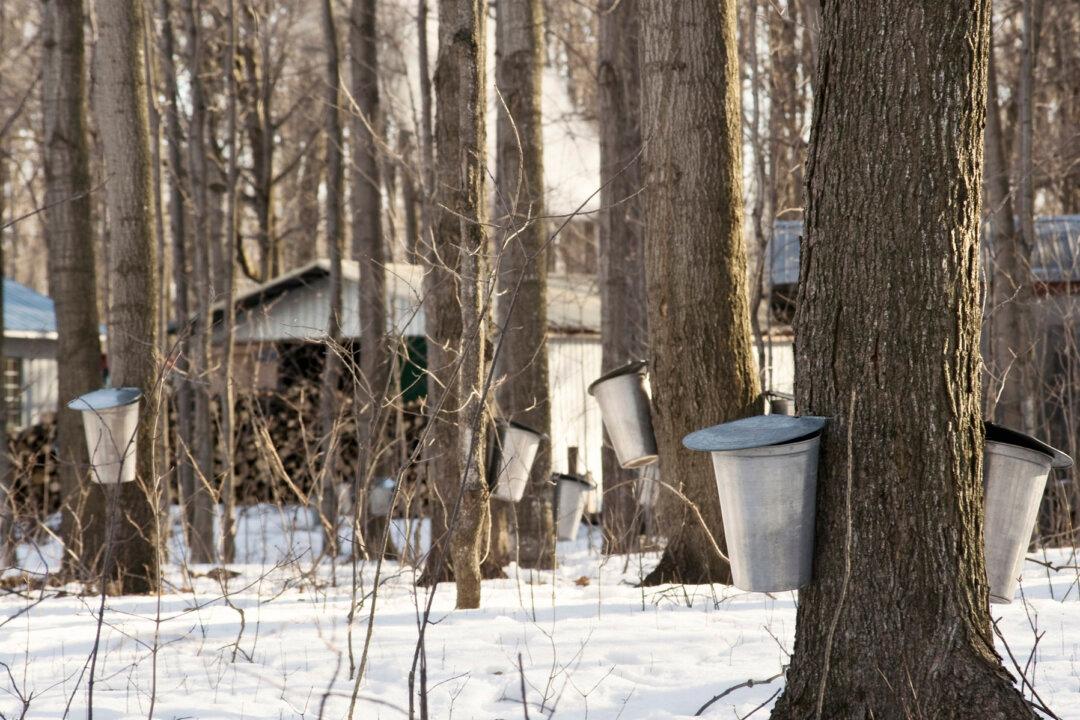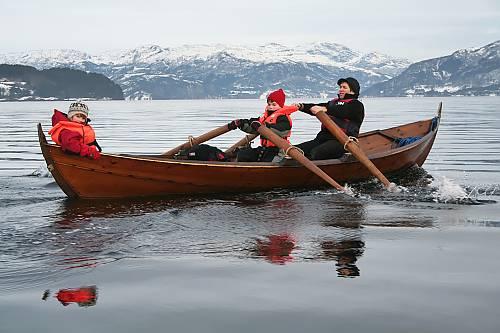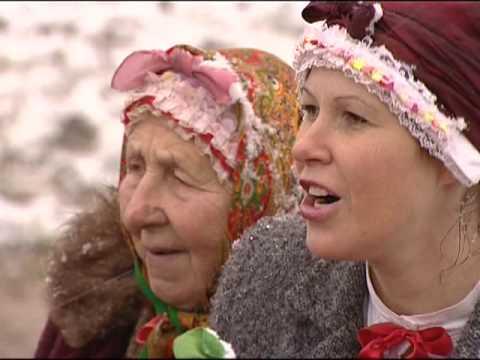It’s no wonder the sugar maple is on Canada’s flag. A maple of the (genus Acer), it is also known as the hard, black, or rock maple and has been here for eons. It was the First Nations people who taught colonists how to make syrup from the tree’s sap. Maple syrup was an important commercial product until around 1875 in Canada. Nowadays, however, it is considered more of a luxury product because of the price.
Sap-producing trees are to be found practically coast to coast in Canada, as well as in Yukon and Alaska. They range from the birch trees my brother once drank sap from after cutting a gash in the bark with an axe (he studied forestry at the University of New Brunswick) to the Quebec maple sugar shacks we visited in our childhood, as well as the sugar shack within Ottawa’s city limits and on through the Prairies and British Columbia, where large-leaf maples now produce sap for syrup-making, especially on Vancouver Island.
Although fairly new to Canadians, birch syrup is also made in the Scandinavian countries and in Russia, Ukraine, and Belarus, from different varieties of birch. It is a prized product in Canada, now made for sale by approximately 14 producers. It can be made from the sap of the numerous species of birch (genus Betula) that are found in forests coast to coast, especially from the gray birch of eastern Canada (which grows to a height of 35 feet) and the paper or canoe birch of the Northern United States and Canada (which grows to a height of up to 100 feet).
Sap runs intermittently for periods of up to six weeks in spring. It prefers sunny days and cool nights and when it is flowing, the sweet maple sap, or birch sap with its wintergreen taste, is caught in buckets then strained, boiled down to concentrate it, and sold in bottles or cans.
When my family lived in Appleton, Ontario, there were four tall maple trees on our property. I wanted to show my young son how easy it was to make syrup, so we tapped two of the trees, then boiled the sap in our kitchen and lo and behold, we produced our own syrup. It is not advisable to do, though, because there is a sticky resin that goes up in the steam and it can coat your kitchen. That is why boiling is done in sugar shacks.
It takes approximately 85 to 150 litres of birch sap to make a litre of syrup, whereas only half that amount of maple sap is needed to make the same amount of syrup.
Maple Cream Candy
500 ml (2 cups) maple syrup
5 ml (1 tsp) vanilla
Boil maple syrup over very low heat without stirring until it reaches the late thread stage, 111º C (233º F). Cool to around 43º C (110º F), about an hour, without stirring. Add vanilla and beat until it becomes light in colour and fluffy and is stiff enough to hold its shape. Mould into patties or balls and cover tightly when cool.
Creamy Maple Syrup Dressing
250 ml (1 cup) mayonnaise
125 ml (1/2 cup) pure maple syrup
50 ml (1/4 cup) apple cider vinegar
Mix ingredients together. Chill and serve with salad.
Maple French Toast
125 ml (1/2 cup) maple syrup
3 eggs
75 ml (1/3 cup) milk
1 ml (1/4 tsp) salt
2 ml (1/2 tsp) vanilla
6 slices day-old French bread, 1 cm (1/2-inch) thick
25 ml (2 tbsp) butter
Beat together syrup, eggs, milk, salt and vanilla. Place slices in a single layer in a 33 x 23 cm (13 x 9-inch) dish. Pour batter evenly over bread. Cover and refrigerate for 3 hours or overnight. Melt butter on griddle and add slices. Brown on each side. Serve with maple syrup, maple butter, or maple jelly. Makes six servings.
Recipes courtesy of the Ontario Maple Syrup Producers Association from their cookbook, “Simply Maple Cookbook” (www.ontariomaple.com)
Birch Orange BBQ Sauce
Juice and pulp of 2 to 3 oranges
Juice of 1 lime
50 ml (1/4 cup) birch syrup
1/2 onion, chopped
25 ml (2 tbsp) soy sauce
2 cloves garlic, minced
25 ml (2 tbsp) fresh parsley, minced
5 ml (1 tsp) paprika
Puree all ingredients in a food processor and enjoy, especially with salmon or chicken.
Receipe courtesy of Kahiltna Birchworks, Alaska (www.alaskabirchsyrup.com)
Susan Hallett is an award-winning writer and editor who has written for The Beaver, The Globe & Mail, Wine Tidings, and Doctor’s Review, among others. She is currently the European editor of Taste & Travel International. Email: [email protected]





